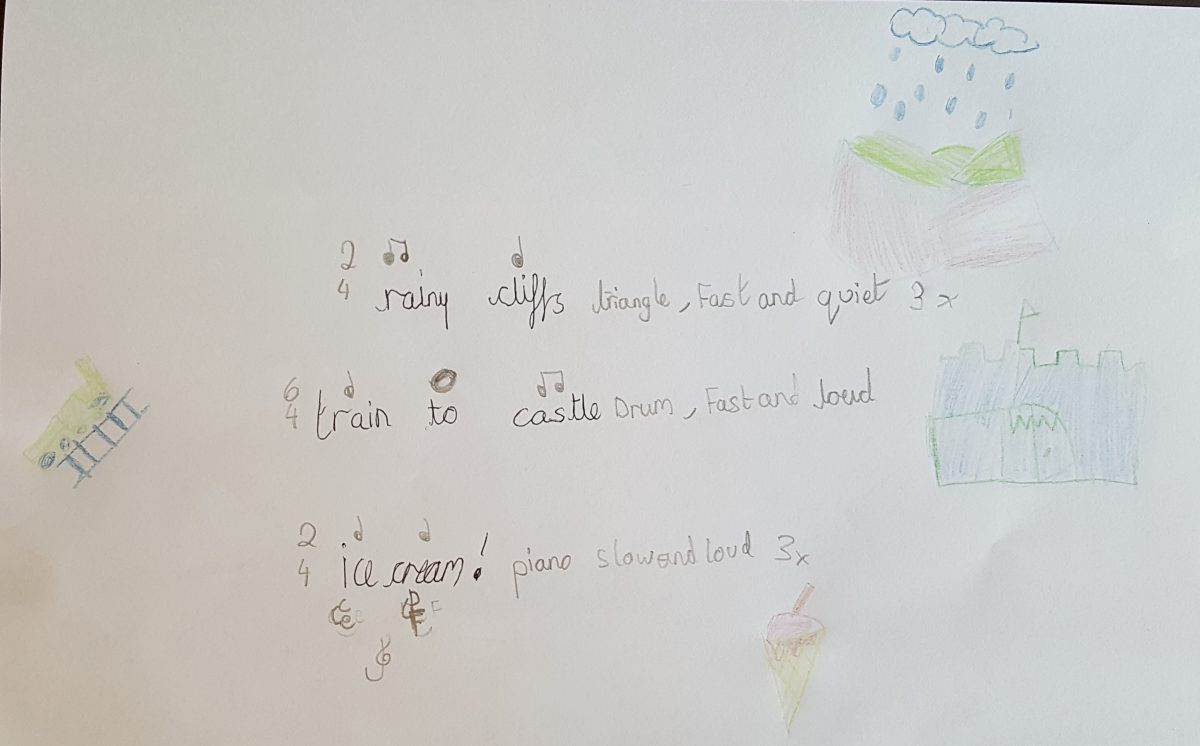Visualising musical elements
Music can be such an abstract thing, lacking in concrete visual elements. Once it has been presented, it is gone unless you capture it in some form of notation or sound recording.
One of the best ways to teach the musical element of rhythm is to use the long/short sounds present in spoken word. Children acquire a spoken vocabulary before they can read or write and are quick to catch on to the rhythms of different words.
For slightly older children, one of my favourite activities to explore words and music is by using haiku – the evocative but minimalist way of writing poetry which had its roots in Japan. In using haiku as a creative stimulus, I chose not to follow the strict rules of each line having 5, 7 and 5 syllables but adopted instead the spirit of the poetic form which used words sparingly to conjure different moods.
This haiku was composed by F, my 8 year old student. It was about her recent summer holiday activities:
rainy cliffs
train to castle
ice cream!
F clapped the rhythm of her haiku. I asked her how she could use familiar musical notes (semibreves, crotchets, minims, quavers) to represent the duration of each syllable in her words. She experimented for a while and wrote down her ideas. Suddenly she exclaimed “Look each line adds up to a different number of counts!” Cue excited scribbling of time signatures…
Next, F chose different instruments to play her rhythms: the triangle to represent the sound of raindrops, fast drum beats to show the excitement of the speeding train, and slow piano notes to describe her memory of savouring an ice cream.

